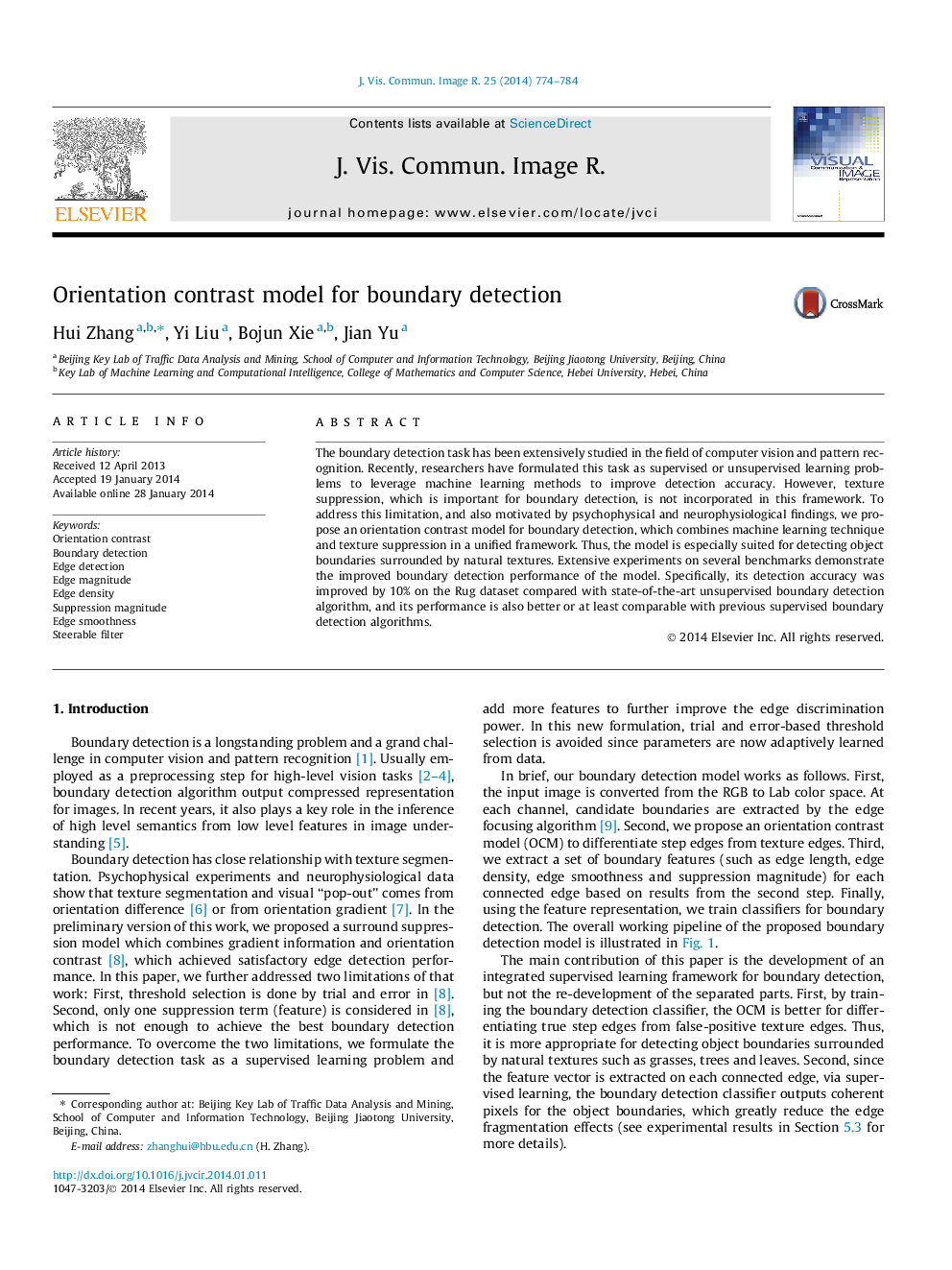| Article ID | Journal | Published Year | Pages | File Type |
|---|---|---|---|---|
| 528639 | Journal of Visual Communication and Image Representation | 2014 | 11 Pages |
•The orientation contrast model can differentiate step edge from texture edge.•Using connected edge greatly reduced the edge fragmentation effects.•The boundary detection accuracy has an improvement on Rug dataset.
The boundary detection task has been extensively studied in the field of computer vision and pattern recognition. Recently, researchers have formulated this task as supervised or unsupervised learning problems to leverage machine learning methods to improve detection accuracy. However, texture suppression, which is important for boundary detection, is not incorporated in this framework. To address this limitation, and also motivated by psychophysical and neurophysiological findings, we propose an orientation contrast model for boundary detection, which combines machine learning technique and texture suppression in a unified framework. Thus, the model is especially suited for detecting object boundaries surrounded by natural textures. Extensive experiments on several benchmarks demonstrate the improved boundary detection performance of the model. Specifically, its detection accuracy was improved by 10% on the Rug dataset compared with state-of-the-art unsupervised boundary detection algorithm, and its performance is also better or at least comparable with previous supervised boundary detection algorithms.
